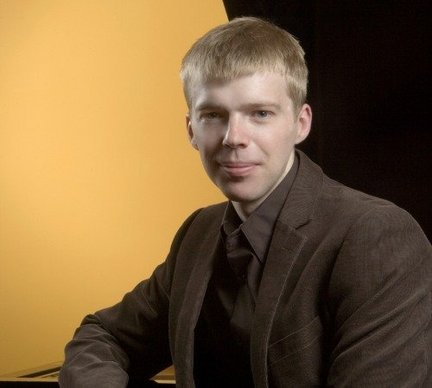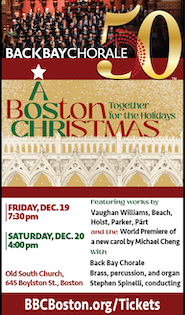BMOP celebrates youngish composers in season closer

Boston Modern Orchestra Project presented the world premiere of Andrew Norman’s “Play” Friday night at Jordan Hall.
Ah, classical music—where else in our culture can you be in your mid-30s and be celebrated as part of a youth movement?
A small but enthusiastic audience consisting mostly of Baby Boomers and Greatest Generationers cheered on their juniors in New England Conservatory’s Jordan Hall Friday as the Boston Modern Orchestra Project led by Gil Rose presented “Gen OrcXstrated,” a program of three works for large orchestra by composers born in the late 1970s.
Two of the pieces were being heard for the first time in New England, and a third, Play by BMOP’s 2011-13 composer-in-residence Andrew Norman, had its world premiere Friday night.
In pre-performance remarks from the stage, Norman described Play as “my biggest work ever,” a description that might have referred to the piece’s three substantial movements, the complexity of its architecture, the size of the orchestra needed to play it, or all of the above.
Play also contained the evening’s only explicit references to Generation X’s supposed preoccupation with computers, video games, and media mashups. One of the title’s many meanings came out of the game world, as did the movement markings—not allegro, adagio, and so forth, but Level 1, Level 2, and Level 3.
Those markings suggest a game’s progression from simple to complex and a player’s accumulation of skills and attributes, and in some ways the piece followed that scenario. Distinctive musical motives that emerged in the first two movements, for example, were satisfyingly spun together in the last.
But overall the piece followed, at least in harmonic terms, the more traditional Beethoven scheme of complexity to resolution. Opening in a frenetic, dissonant tangle for the full orchestra, the music dwindled to a sort of impasse in Level 2 before finding a euphonious balance of spinning counterpoint in Level 3, and attenuating to nothing at the close.
A more game-like feature was the constant element of surprise. The composer’s generation is credited with putting the label “extreme” on everything from sports to baby shoes, and the sudden contrasts in this piece certainly qualified as that. Long silences were punctuated by a few bars of explosive fortissimo, and dense orchestral tutti gave way to one muted trumpet barely making a sound.
On the larger scale, the piece’s structure offered few clues about what direction it would take next. The listener was like a gamer looking at a door and trying to guess if there’s a monster behind it, or a princess, or nothing at all.
No matter how complex and seemingly chaotic the music became, Norman’s contrapuntal skill and imaginative handling of the large orchestra were evident throughout.
The same could be said of the musicians, who appeared to be giving a tight, intensely coordinated performance of their often very fast and complicated parts under conductor Rose’s laser-clear beat. The flawless coordination in the third movement of two players with wood clappers—which would sound terrible if they were even a microsecond off—can stand for the whole.
A single hearing can hardly do a piece like Play justice, but the work’s ambition and brilliant performance earned it warm and prolonged applause.
The concert opened with Sea-Blue Circuitry by Mason Bates. (All right, that’s one more Gen-X tech allusion in a title.) Again, the “circuitry” was evoked by live players on traditional instruments, not electronically added to the performance. The first movement, actually titled “Circuits,” set its motives in somewhat circular patterns, with a certain electricity derived from the jumpy, Stravinskian rhythms.
The non-electrical image of organic matter drifting downward through the ocean provided the title and character of the second movement, “Marine Snow,” an uncanny nocturne chiefly for winds and brass. And the closing movement, “Gigawatt Greyhound,” was a race, whether for electrons or canines.
Bates’s abundant use of layered orchestral colors brought to mind such mid-twentieth century American composers as Copland, Harris, and Schuman. The piece’s all-American character was enhanced by allusions to hoedown music and big-band jazz, especially at the work’s ebullient close.
The geographical focus shifted to China for Path of Echoes: Chamber Symphony No. 1 by Huang Ruo. Educated at Oberlin and Juilliard, the Hainan-born composer hasn’t lost his fondness for Chinese opera-style high winds and percussion, whose piercing fortissimo and jangly overtones have an “extreme” quality all their own.
And so, just as circuitry sounds American in Bates’s piece, the sounds of nature come across as Chinese in Path of Echoes, a work in five linked movements inspired, the composer said in a program note, by the way sound bounces and reverberates along a mountain path.
The composer’s sound catalogue of “voices, birds, wind, rain, thunder, falling rocks, and sometimes the echoes of echoes” will do nicely to characterize the themes of this work, ingenious imitations of nature by instruments that popped, peeped, slid, moaned, and thumped.
Sometimes the echoes were naturalistic—a single motive entering in different instruments in rapid succession—and sometimes they were distorted, delayed, or elaborated. The music could fall into a steady pattern or be violently capricious, and it picked up momentum in the scherzo-like middle movement.
The finale’s brass cluster chords, each played crescendo, and skittering strings built excitement, culminating in a final gong crash, which was left to echo by itself around the hall.
Again, Rose and the orchestra gave taut, exciting performances of the two pieces, vividly conveying the distinct sound world of each.
Whatever electronic influences may be lurking in the circuitry of these composers’ brains, their three pieces on Friday night were produced entirely by fingers and breath on wood and metal. Those who fear for the future of the symphony orchestra can take heart in knowing that there is still quality work being done by more-or-less young composers writing for classical music’s big band.
The performance was the last event in BMOP’s 2012-13 season. bmop.org.
Posted in Performances
